 |
 |
 |
| |
FINAL ANALYSIS OF THE GRAND PLAN STUDY: EFFICACY OF 8 weeks GLECAPREVIR/PIBRENTASVIR (G/P) FOR HCV- INFECTED PEOPLE WHO USE DRUGS (PWUD) DISENGAGED FROM HEALTH CARE: A SYSTEMATIC APPROACH TO ENGAGEMENT AND HCV TREATMENT
|
| |
| |
71% active Fentynal users - Opiates/fentanyl were the most commonly used substance (90% active use at baseline).
AASLD 2022 Nov 4-8
Brian Conway1,2, Shawn Sharma2, Rossitta Yung2, Leo Yamamoto2, David Truong2 and Ginny Liu2, (1) Simon Fraser University, (2)Vancouver Infectious Diseases Centre
Program Abstract
Background: In our centre, we have implemented targeted programs to increase access to HCV treatment among the most vulnerable PWUD subgroups. Over the past 2 years, we have demonstrated cure rates over 95% among HCV-infected inner-city residents with active fentanyl use receiving an 8- week course of G/P. We now present final result of this protocol, consolidating data on safety and efficacy and any effect of HCV treatment on adverse events resulting from ongoing street opioid use.
Methods: Through outreach events conducted at inner- city single room occupancy dwellings in Vancouver, Canada, we identified subjects with HCV infection and engaged them in a multidisciplinary program of care within which HCV treatment with G/P was provided, with strategies to favour adherence and continued engagement in care to determine the out-come of treatment (cure, or SVR12). This included options for daily dispensing with opiate agonist therapy or weekly delivery of medications to the place of residence. If a subject was unavailable for weekly check- ins, interventions were immediately implemented to re-integrate then into care. This analysis presents the rate of documented cure (achievement of SVR12) and significant adverse outcomes, including opioid-r elated overdose deaths. Results: In the final analysis, we identified 120 subjects (median age 48.5 years, 72%male, 21% indigenous). Opiates/fentanyl were the most commonly used substance (90% active use at baseline). Treatment was not yet initiated in 4 subjects but will be shortly. The current analysis cohort includes 116 subjects, of which 108 have completed treatment. Reasons for treatment non- completion were: early dis-continuation (4), LTFU (1), and being still on treatment (3). During the post-treatment phase, HCV RNA values were not available for 9 subjects due to accidental death (1), LTFU (1) and awaiting SVR 4 and/or 12 (7). Of the 99 subjects for whom post-t reatment viral load measurements are currently available, SVR 12 has been achieved in 97/99 (98%) subjects, with both treat-ment failures being attributed to virologic relapse. Of all subjects having reached a measurable endpoint, cure rates are 97/106 (92%). There were no cases of on- treatment virologic failure. Despite the theoretical risk of a drug interaction between Glecaprevir and opiates, only a single overdose death was recorded. Final analysis of all 120 subjects will be presented.
Conclusion: The GRAND PLAN study has clearly demonstrated that if HCV treatment is administered to extremely vul-nerable PWUD within a setting where specific strate-gies are implemented to maintain engagement in care, we demonstrated LTFU rates <2% and high treatment success rates, with an excellent safety profile.
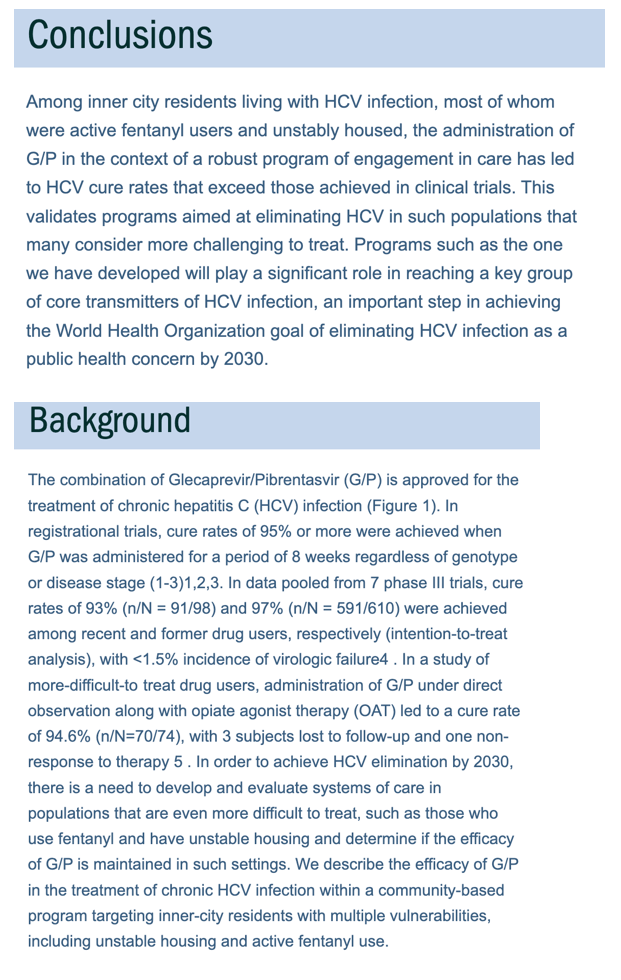
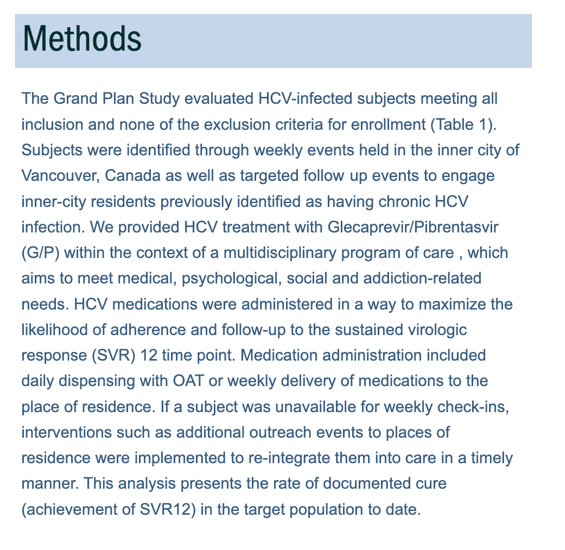
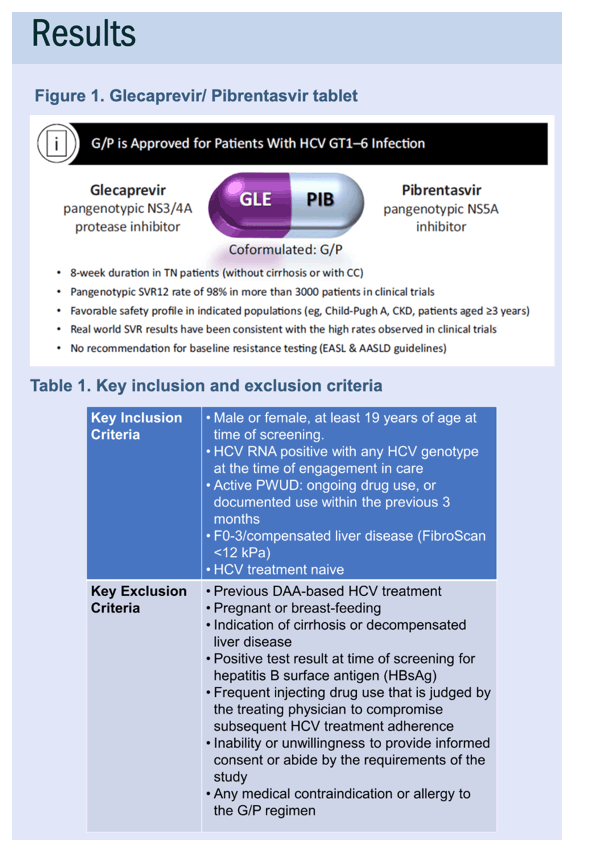
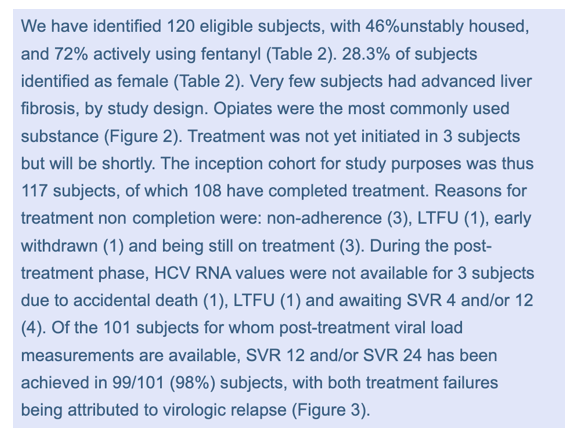
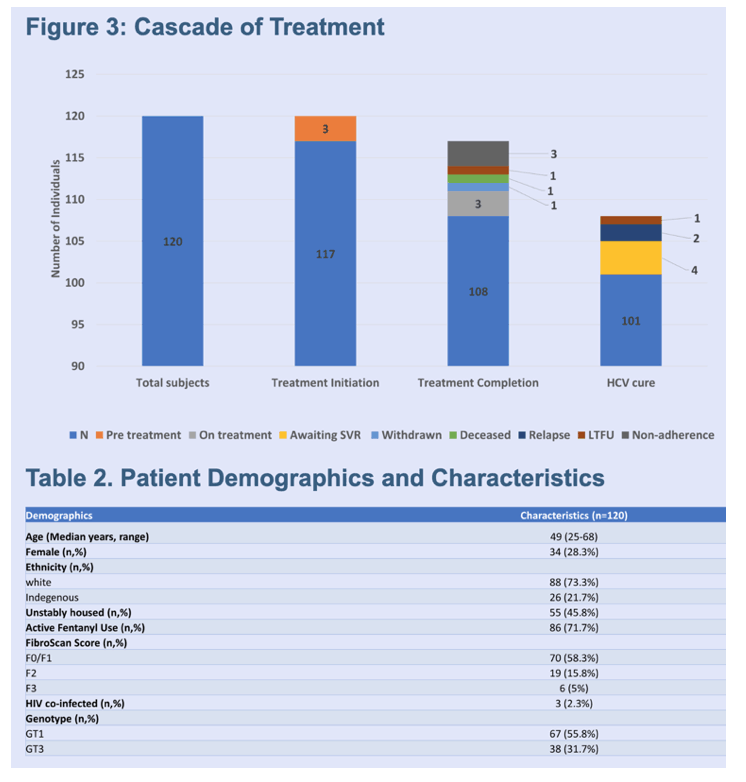
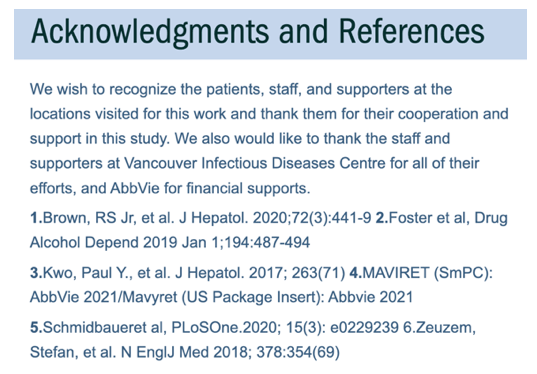
|
| |
|
 |
 |
|
|